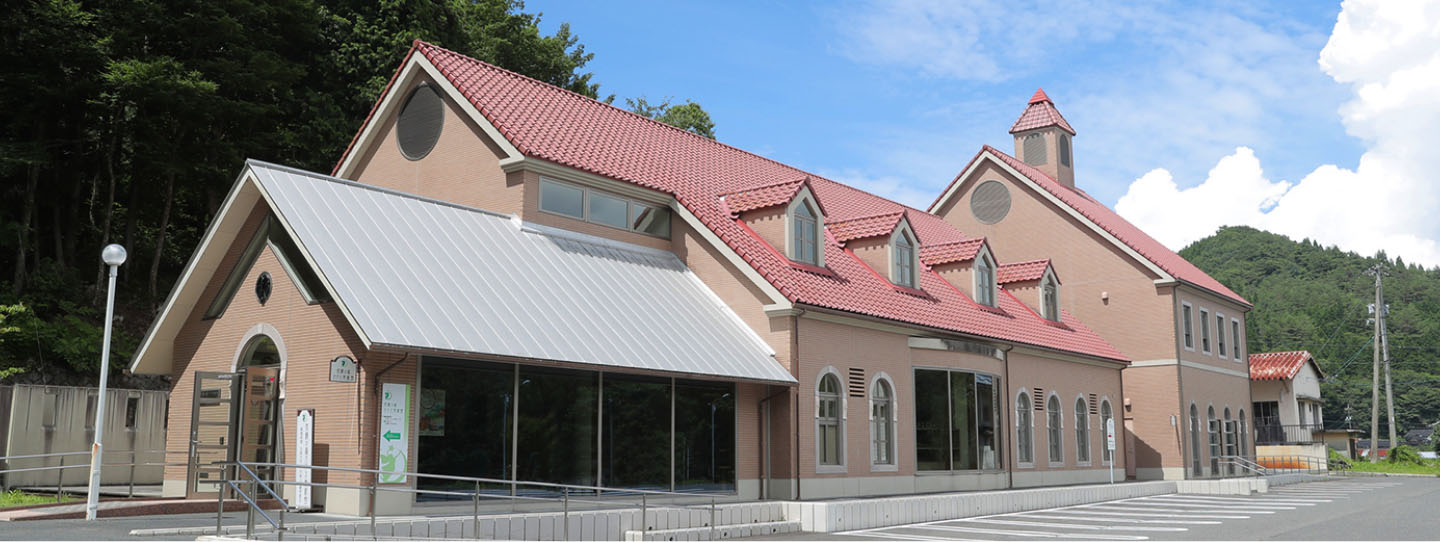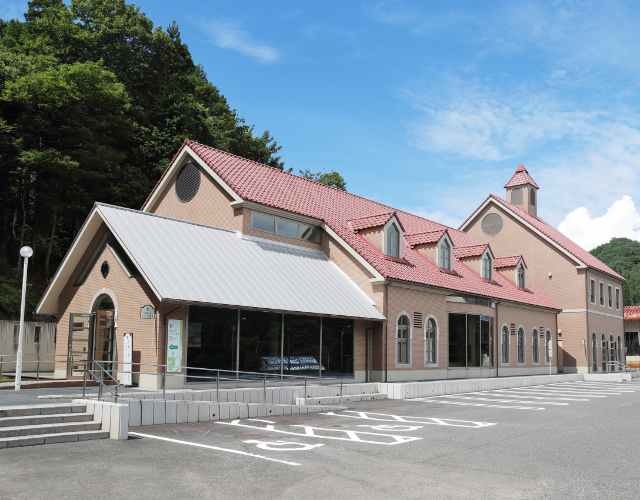About Fairywood Glass Museum
Greetings
The Fairywood Glass Museum, built in 2006 by Kagamino Town, to the rare art of uranium glass. Uranium was used by both Japan and western nations as a glass colorant between the 19th and the 20th centuries. The glass made at this museum uses uranium from the nearby Ningyo Pass, and was named "Fairywood Glass" because of how it fluoresces green in the presence of UV light. Although a small museum, we house an exhibition of both uranium glass works from around the world and contemporary glass works, a glass workshop offering glass experiences, and an art shop which sells glass items. Please enjoy the mysterious glow of the glass.
Origination
In 1955, a uranium deposit was discovered in the Ningyo Pass of Kagamino Town's Kamisaihara region. Following the completion of mining in 1998, it was decided that the uranium from the Ningyo Pass would be used as a colorant in creating original uranium glass pieces as part of a plan for regional development centered on unique product development using uranium. Later, designs were drawn up for a museum and glass workshop which could become a center for the development of local industry, tourism, and regional culture: The Fairywood Glass Museum was opened in April 2006.

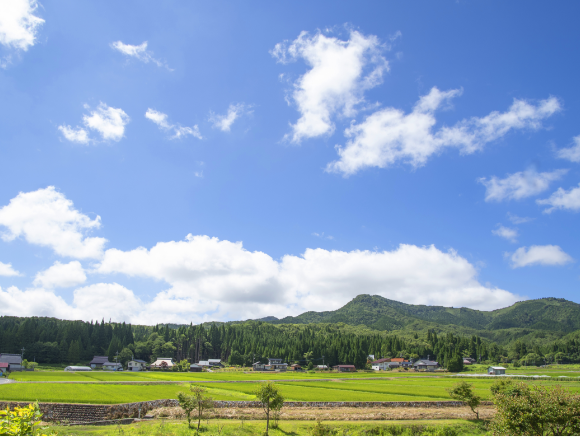
About Fairywood Glass Museum
Located in Kagamino Town in northern Okayama Prefecture is one of the world's only museums dedicated to uranium glass. The first floor houses a permanent exhibition of uranium glass from around the world including Bohemian glass masterpieces from the 19th century. The temporary exhibition space on the second floor features glass-related exhibitions three to four times a year. In the art shop you can purchase original "Fairywood Glass" pieces made with Kagamino Town's uranium glass in the museum workshop, as well as other various glass items. The glass workshop offers three different experiences: glass blowing, leutor and sandblasting.
Collections
The Fairywood Glass Museum's archive and exhibition collection comprises of two categories: 19th and 20th century uranium glass works from both Japan and overseas, and glass works made by contemporary glass artists. The majority of the older uranium glass items in the collection were personally collected by our honorary director, Dr. Ken Tomabechi. The exhibition also features a very popular goblet from the Russian Empire, which was owned by uranium glass collector, Ritsuo Yoshioka. Both men donated these items to Kagamino Town, and they are what makes up our current exhibition. The contemporary glass artworks are displayed across both floors so visitors can enjoy a wide range of uranium glass pieces from the 19th century to the modern day.
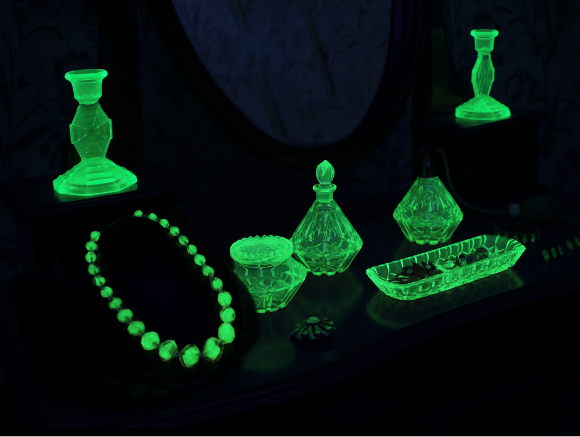
Uranium glass was widely used in women's cosmetic products and accessories. Here we have placed such items to recreate a lady's powder room.
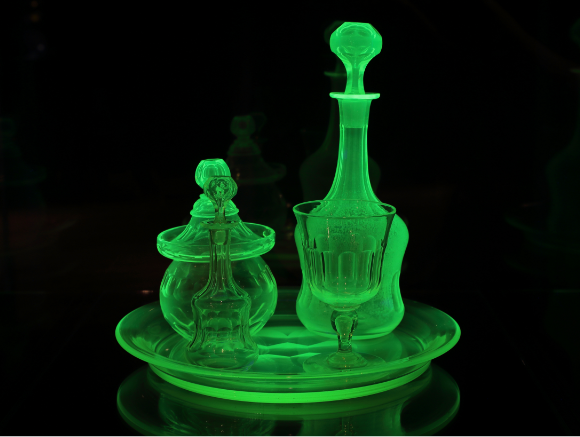
A table set made in France in the latter half of the 19th century.
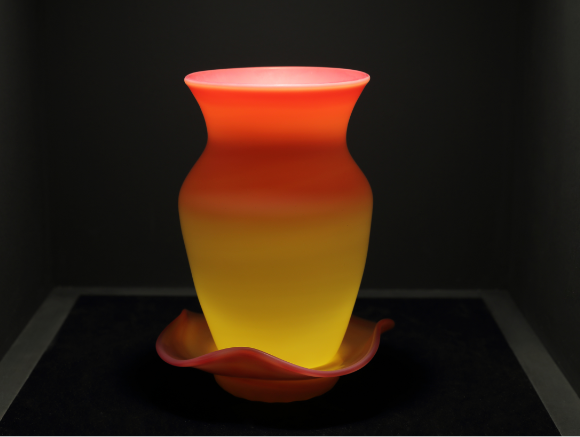
This glass is known as Burmese glass. It is characterized by its gradual shading from pale gold to light pink.
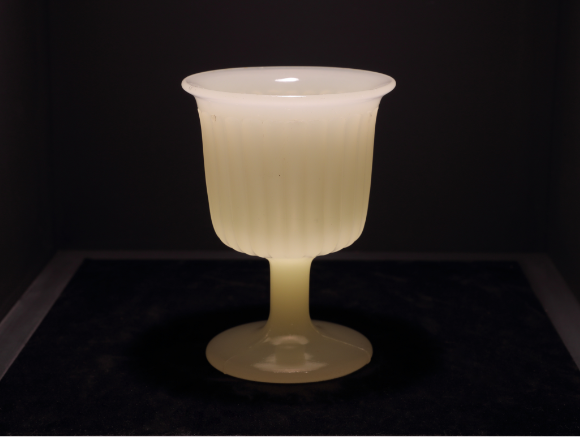
An ice cream cup made in America in 1930.

An item used by the nobility of European high society when drinking coffee. Its silver lid bears a mark of the Austrian government which certifies the purity of the silver. The mark also includes the year it was produced (1840), and this is currently the oldest uranium glass item in the world with a known production date.
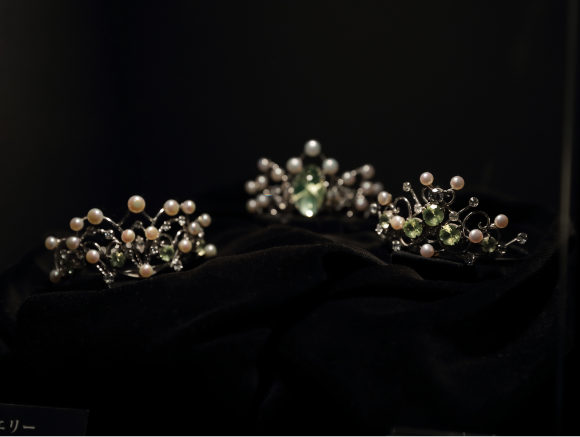
A tiara created in collaboration with jewelers as part of an experimental test of the various possibilities of uranium glass.
About Uranium Glass
Uranium glass is made using only a tiny among of uranium as a colorant. It has a yellow-green hue and will fluoresce (glow) a vivid bright green in the presence of strong Ultra Violet light like that emitted by a blacklight, for example. This is because when uranium atoms absorb Ultra Violet radiation they give off energy which is seen by the human eye as a bright green glow. It is fun to watch the hue change as it is exposed to the Ultra Violet rays from the sun.
History of Uranium Glass
Production began in Bohemia (today's Czech Republic) in the 1830s, and as the beauty of its color became known it spread across Europe to the United Kingdom, France, Germany and Italy during the 19th century. It reached America in the mid-19th century, and became the world's most popular colored glass of the time with many items of tableware, glasses, vases and accessories being made until production was halted during the World War II.
In Japan too uranium's use as a colorant was gaining attention together with modern glass making techniques around the start of the Meiji period, and between the Taisho period and the start of the Showa period, tableware, glasses, watches and lighting fittings were being mass produced.
Following this, the World War II caused countries to limit uranium resources for their militaries, and it thus disappeared from the world's glass workshops. Although it never really returned to the mainstream post-war, there have been signs of a revival in America and the Czech Republic. Today, only museums are crafting items with uranium glass from Japan.
Safety of Uranium Glass
People think of uranium as something scary, but there is no need to worry because the level of radioactivity in uranium glass is extremely low. Items made by the Fairywood Glass Museum today contain the extremely low level of 0.1% (weight ratio). The amount of radioactivity in one wine glass is almost the same as the potassium levels being produced naturally inside our bodies; It is completely okay to use our products in your daily life and on the dinner table.
What is Fairywood Glass Museum
"Fairywood Glass" is Kagamino Town's own uranium glass brand made with locally sourced uranium as a colorant. We named the glass "Fairywood Glass" because of its mystical glow that inspires images of dancing fairies illuminating the dark sky.
We are always improving our craftsmanship by creating each piece individually by hand for the value.

